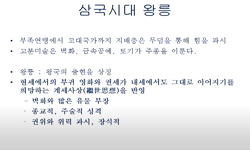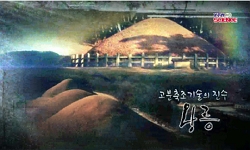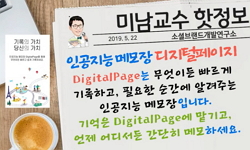This research is on the viewpoint of art history of Seogin statue which was created in Joseon Dynasty royal tomb. There are various statues in Joseon Dynasty royal tombs, such as human shaped Munseoginsang(文石人 像)·Museoginsang(武石人像), a...
http://chineseinput.net/에서 pinyin(병음)방식으로 중국어를 변환할 수 있습니다.
변환된 중국어를 복사하여 사용하시면 됩니다.
- 中文 을 입력하시려면 zhongwen을 입력하시고 space를누르시면됩니다.
- 北京 을 입력하시려면 beijing을 입력하시고 space를 누르시면 됩니다.
https://www.riss.kr/link?id=T14555867
- 저자
-
발행사항
서울 : 東國大學校, 2017
-
학위논문사항
학위논문(박사) -- 東國大學校 大學院 美術史學科 2017
-
발행연도
2017
-
작성언어
한국어
- 주제어
-
KDC
609 판사항(6)
-
DDC
709 판사항(23)
-
발행국(도시)
서울
-
형태사항
iii, 402 p. (일부접지) : 삽화, 도표 ; 26 cm
-
일반주기명
지도교수: 崔應天
권말부록: 조선전기 왕릉 배치도(건원릉, 1408, {조선왕릉종합학술조사보고서(I)}, p.118수정) 등
참고문헌: p. 267-280 - DOI식별코드
- 소장기관
-
0
상세조회 -
0
다운로드
부가정보
다국어 초록 (Multilingual Abstract)
This research is on the viewpoint of art history of Seogin statue which was
created in Joseon Dynasty royal tomb. There are various statues in Joseon
Dynasty royal tombs, such as human shaped Munseoginsang(文石人
像)·Museoginsang(武石人像), animal shaped Seogyang(石羊)·Seokho(石虎)·Seokma(石
馬), protective objects such as Byeongpungseok(屛風石)·Seoknangan(石欄干)·Gokjang
(曲墻), and crafts formed items such as Jangmyeongdeung(長明燈)· Mangjuseok(望柱
石)· Sangseok(床石), etc., and tombstones that indicate the owner of royal tomb,
etc. All of them have the symbolism and formative characteristic respectively
which magnify(莊嚴) royal tomb, however most essential statue is ‘Seoginsang’.
‘Seoginsang’ was consistently produced for 519 years during the long
history from Taejo, the first King of Joseon till the last one Sunjong,
currently as many as total 214 pieces of them exist in good state. Compared
to other area of art history, the number of works that can tell the absolute
age is large, also, visually remarkable since 4 huge human shaped statues in
2∼3m are distributed intensively. Level of works is more excellent compared
to seoksu(石獸) or Jangmyeongdeung, and the arrangement is in the central
position, such as Neungsang Junggye(陵上 中階), and Hagye(下階),
differentiated from other types of stone articles. Particularly, as Joseon royal
tomb was registered as UNESCO World Cultural Heritage in 2009, lots of
papers on this subject were presented in art history field, also, it receives
attention as highly valuable academic field in other areas.
Joseon Dynasty royal tomb Seoginsang grandly reproduces Munmubaekgwan(文武百官) the King ruled, of which formativeness with huge lump was
differentiated from other stone articles. Munseoginsang symbolizes strong
royal authority due to its dignity and solemnity, while Museoginsang has
more strong symbolism of protection due to threatening as well as brilliant
decoration.
Above all, this research compared Seoginsang of Chinse Song· Ming(宋·明) with
Goryeo(高麗) Gongmin royal tomb in order to investigate the object that influenced
Seoginsang of Joseon Dynasty royal tomb. Meanwhile comparison of Chinese
emperor’s tomb was mainly with Ming(明) Juwonjang(朱元璋)’s Hyoneung(孝陵), Ming
(明) Sibsamneung(十三陵)’s Seokgak. However, the researcher attempted comparison
with North Song(北宋) emperor’s tomb, Ming Hwangneung (Juwonjang’s father(皇陵)’s
tomb, completed during 1366~1379), and Ming Joneung(Juwonjang’s
great-great-grandfather․ great- grandfather·grandfather(祖陵)’s tomb, completed during
1385~1387) through field survey, and comparison with Yi Munchung(李文忠)
(1339~1384) Guiyangwangneung (岐陽王陵), crowned as the nation establishment
servant of Ming, Seodal(徐達)(1332~1385), and Jungsanwangneung(中山王陵),
considering the status of Joseon. As the result, a conclusion was derived that the
origin or institution of Seoginsang was influenced by Chinese Song(宋), however
Korean own originality was completed based on the compromise with the design and
mode of Goryeo Gongminwangneung.
Firstly, the influence of Song(宋) is as follows. Seokgak set was established
separately in each royal tomb, creation of Seokho and Seogyang also in
Joseon royal tomb by selecting the form of Seokho(石虎)· Seogyang(石羊),
creation of two couples of Seoginsang, placing Mugwanseoginsang ahead of
Mungwanseoginsang, and accepting Mungwanseoginsang which is holding a
hole, wearing Bokdugongbok, and Mugwanseoginsang which is holding a
sword, wearing a helmet and armor.
However creative points are as follows. Installing seokmul highly raised
onto Neungsang(陵上) over the royal tomb burial mound without installing
them onto Sindo, arrangement of Seokho·Seogyang outwards by installing
them circling the burial mound, sculpting Chinese zodiac by installing Byeongpungseok under the burial mound, which does not exist in China at
all, additionally installing and arranging Seokma(石馬) and arranging it behind
Munseoginsang and Museoginsang, and installing Jangmyeongdeung(Stone
lantern), which does not exist in China at all, etc. are creative, differently
from China. Also, costume of Mungwanseogin was applied with Joseon
custome of that period, and Mugwanseogin was tried with change in design
by being applied with Joseon helmet as it was, which was creative. Besides,
look of face, body proportion, pattern of Pumdae(品帶)(officers’ belt) or
detailed pattern of armor, etc. were produced by Joseon’s creative technique.
Next, this research reinterpreted design classification of Seogin through
the overall period of 519 years of Joseon, such as, Munseoginsang(文石人像)
into 3 types, while Museogin(武石人) into 4 types, differently from the
previous way. Munseogin can be classified into type 1, Bokdugongbok type
(幞頭公服形), type 2, Geumgwanjobok type(金冠朝服形), and type 3, mixed
type. Among them, the third one, mixed type is a combined form of
Gongbok, Jobok, and Sangbok(常服). Such types were firstly suggested in
research history, which is based on the design combined with Yadae(也帶)
of Gongbok(公服), Pyseul(蔽膝) of Jobok(朝服), and Mu(武) and Hyungbae(胸
背) of Danryeong(團領), etc. since the 17th century. This is interpreted as the
intention to maximize decoration of Seogin and produce more gorgeously.
Museoginsang is difficult to be compared with actual Gabju(甲冑), and
meanwhile uneasy to classify the design due to complex repetition of
borrowing of Jeonbeom(典範). This research newly classified it into type 1,
Wonjuchunggab type(圓冑衷甲形), type 2, Cheomjupibak type(簷冑披膊形), type
3, Yieomju(耳掩冑) and Pibak type(披膊形), type 4, Yieomju(耳掩冑) and
Chunggab(衷甲), and Pibak(披膊). Particularly, type 4 of Museogin, was
combined with trident type Jeonggae onto the helmet attached with side
pennant, which is comprehended creative combined with the costume in
reality. It was created from the intention to maximize combined type
decoration of Museoginsang gorgeously.
Research on the mode of Seoginsang was divided into total 5 sessionsaccording to change period.
Period 1 (early 15th century~mid 15th century) was succession of the mode
of Goryeo Gongmin royal tomb. Based on this, royal tomb Seogin of Joseon’s
highest(最高) tomb style, Geonwonreung, since then standardization of
Seokmul regulation was established. It has stable proportion similar to
human body, which expressed flexible line and round carving of body.
Period 2 (late 15th century~late 16th century) was settlement period of
hugeness. Joseon’s own solemn and huge royal tomb Seoginsang was
established, exaggerating detailed components and emphasizing protrusion of
sculpture. During the period 3 (early 17th century~early 18th century),
flatness· schematization was proceeded based on the social background
changed since Japanese invasions of Korea, heavy human body expression
was spread. Also, as ‘Seokmul simplification policy’ was implemented during
Sukjong’s reign, the scale became rapidly reduced. On the other hand,
Seogin buried underground firstly during Sungneung(崇陵) in 1674 was
excavated and reused in a new royal tomb, which also influenced the 19th
century. Period 4 (mid 18th century~late 18th century) was the peak of
realism mode based on the renaissance of Young(英)· Jeongjo(正祖代). Very
exquisite Seogin of body expression almost real was produced, and detailed
factors were very minute. Period 5 (early 19th century~early 20th century)
was a turbulent modern period, where qualitative deviation became severe
and stiffness of body was proceeded. Also, as the Emperor’s tomb appeared
with the proclamation of Korean Empire(大韓帝國), traditional esthetic sense
of Joseon was finalized.
Such mode of Seoginsang was closely related to the master craftsman who
directly produced Seoginsang. To prove this, this research classified the
genealogy of the craftsmen affiliated with Sanneungdogam(山陵都監)
Daebuseokso (大浮石所), a department where Seoginsang was produced. This
paid attention to the craftsmen recorded in royal Uigwe of late Joseon royal
family. The period of activity of Seoksu(石手) and sculptors coincided with
the period division of Seogin(石人) mode mentioned in the above, which is important since it can be extended to the research on real thing, being
compared to the currently transmitted work. Seoginsang of royal tomb was
not produced by one artist. It was completed by joint work of several
craftsmen, among them, those who directly influenced design and mode
were Hwawon(畵員), Seoksu(石手), Sculptor(彫刻匠) of Daebuseokso. Hwawon
took the role of Gihwa(起畵), who drew the rough sketch of Seokmul.
Seoksu took the role of selecting and collecting the rough stone and
producing basic frame. Sculptor performed detailed sculpting when Hwawon
drew and attached rough sketch onto the stone. Such specialization of
sculpting must be very efficient in creating 20 types of Seokmul within
limited time.
Major Hwawon who produced Seoginsang were Lee Guiryong(李起
龍)(1600~?), Jang Sirang(張時良)(1646~?), Jang Jabang(張子房)(1636~?), Heo
Sook(許俶)(since 1688~1728), and Heo Gam(許磡)(1736~?), etc., and this
research determined that their role was extended as they undertook
Geonreung in 1800 and Seokgak Ganyeok(石刻 看役).
Seoksu(石手) took the majority of Daebuseokso, generally specialized by
being divided into left and right. Seoksu Byeonsu(石手 邊首) had an
intensive continuity, since it was repeated 10~12 times in royal tomb, and
the genealogy was formed in accordance with mode change. Genealogy of
major Seoksu(石手) was Jo Malryong(曺末龍), Park Geumidong(朴金伊同)(early
17th century) → Ryunam(柳男), Lee Gyeongrib(李景立)(mid 17th century) →
Han Yichung(韓二忠), Lee Cheonryang(李天良), Lee Heeseon(李希善)(late 17th
century)→ O Sajun(吳士俊), Jeong Mongnam(鄭夢男), Geum Cheonseok(金天
碩)(early 18th century) → Park Pilsim(朴弼深), Choi Manseong(崔萬成), Kim
Daehwi(金大輝), Jeong Yubok(鄭有福)(mid․late 18th century) → Kim Jinseong
(金振聲)(19th century). Among them, Seoksu(石手) Jo Malryong(曺末龍)
received Jeong 3 Pum(正3品) Tongjeongdaebu(通政大夫), being acknowledged
with his contribution, and it was determined that royal tomb Seoksu(石手)
widely participated in Seogyeok of Buddhist art, considering they participated
in construction of Doseondaesa(道詵大師)·Sumidaesabi(守眉大師碑) of Yeong-am Dogabsa. Also, as the result of comparing early 17th century Seoksu(石手)
Byeonsu(邊首(head)) with『Changgyeonggungsurwedogamuigwe (昌慶宮修理都監
儀軌)』(1633), most of Seoksu were overlapped, accordingly, it was confirmed
that royal tomb Seoksu and palace construction Seoksu shared the same
activity scope, also, it was presumed that the mode and pattern of palace
Seokjo were shared.
Sculptors were all Gyeonggongjang(京工匠), whose name was changed to
‘Hwajang(咊匠)’ since Nyeongneung(寧陵) in 1673. Genealogy of major sculptors
was Jeon Sayeong(田士榮), An Innam(安仁男)(early 17th century) → An Ryenam(安
禮男), Park Seonghwi(朴成輝), Lee Gwinam(李貴男)(late 17th century) → Eom
Jeongpil(嚴廷弼), Ryang Heung(梁興), Pyo Sijae(表時才)(early 18th century) → Ryu
Chunseong(柳春成), Ryang Cheolseok(梁鐵石), Lee Daechun(李帶春)(mid and late
18th century), etc. Among them, Jeon Sayeong(田士榮) was the sculptor Byeonsu
(邊首) of sulptors as Mokneung(穆陵), etc. in 1632, who was recorded as
‘Geumjang(金匠)’ in『Seonjodaewang(宣祖大王) Uiyinwanghoo(懿仁王后) Jonhodogam
uigwe(尊號都監儀軌)』(1621). Ahn Yinnam(安仁男) was a sculptor Byeonsu(邊首) of
Jangneung(長陵), etc. in 1636, who was recorded as ‘Yibsajang(入絲匠)’ in『Yinjo(仁
祖) Jangryeolwanghoo(莊烈王后) Garyedogamuigwe (嘉禮都監儀軌)』(1639),『Hyojongseja
(孝宗世子) and Bingung(嬪宮) Chaekryedogamuigwe (冊禮都監儀軌)』(1645), etc. That
is, many of sculptors had excellent technique as the craftsmen of metal crafts of
royal family during that period, as the skillful craftsment good at handling
materials.
Seoginsang of Joseon royal tomb was the artworks of ‘moderation’.
Seoginsang was the essence of royal family stone art, however it was
conservative and daunting. Nevertheless, the reason why we pay attention to
Joseon royal tomb Seokmul(石物) is because they are organic sculptures that
aggregate symbolism, continuity, and artistry of Korean sculpture history.
Based on this research, it was determined that Joseon royal tomb
Seoginsang were creative sculptures, not merely functional Seokmul but also
highly valuable enough for art appreciation today.
목차 (Table of Contents)
- Ⅰ. 머 리 말 1
- 1. 연구의 목적 3
- 2. 연구사와 연구방법 6
- Ⅱ. 朝鮮時代 王陵 石人像의 起源과 文獻 規範 25
- 1. 中國 陵墓 石人像의 양상 25
- Ⅰ. 머 리 말 1
- 1. 연구의 목적 3
- 2. 연구사와 연구방법 6
- Ⅱ. 朝鮮時代 王陵 石人像의 起源과 文獻 規範 25
- 1. 中國 陵墓 石人像의 양상 25
- 1) 中國 古代 陵墓 石人像의 출현 25
- 2) 中國 宋代 陵墓 石人像의 전개 43
- 3) 中國 明代 陵墓 石人像의 전개 52
- 2. 朝鮮時代 이전의 王陵 石人像의 양상 63
- 1) 統一新羅時代 王陵 石人像의 출현 63
- 2) 高麗時代 王陵 石人像의 전개 72
- 3) 高麗 玄·正陵 石人像과 독자성의 확립 84
- 3. 朝鮮時代 王陵 石人像의 文獻 規範 89
- 1) 健元陵과『國朝五禮儀』를 통한 표준화 90
- 2)『國朝喪禮補編』을 통한 재정비 95
- Ⅲ. 朝鮮時代 王陵 石人像 圖像의 분류 102
- 1. 文石人像 102
- 1) 제1유형 幞頭公服形 102
- 2) 제2유형 金冠朝服形 107
- 3) 제3유형 혼재형 112
- 2. 武石人像 116
- 1) 제1유형 圓冑 衷甲形 119
- 2) 제2유형 簷冑 披膊形 122
- 3) 제3유형 耳掩冑 披膊形 129
- 4) 제4유형 혼재형 132
- Ⅳ. 朝鮮時代 王陵 石人像의 양식 변천 135
- 1. 제1기 高麗 玄·正陵 전통 양식의 계승 (15C초기~15C중기) 137
- 1) 健元陵의 정립과 신체 비례의 안정화 137
- 2) 괴량감의 발현 139
- 2. 제2기 거대화의 정착 (15C말기~16C말기) 142
- 1) 거대화의 증대 142
- 2) 구성요소의 과장과 돌출감의 강조 146
- 3. 제3기 평면화와 석물의 간소화 (17C초기~18C초기) 152
- 1) 평면화의 확산 152
- 2) 석물의 간소화로 인한 축소 158
- 3) 石人의 재사용과 彫琢 수리 162
- 4. 제4기 사실성의 추구 (18C중기~18C말기) 169
- 1) 문예부흥기와 사실적인 신체 구현 169
- 2) 회화적 표현의 심화 173
- 5. 제5기 경직화와 皇帝陵 石人像의 출현 (19C초기~20C초기) 177
- Ⅴ. 朝鮮時代 王陵 石人像의 제작 匠人 183
- 1. 朝鮮時代 王陵 大浮石所의 匠人 유형 183
- 2. 朝鮮時代 王陵 石人像 제작의 대표 匠人 193
- 1) 화원과 起畵 194
- 2) 石手와 石役 208
- 3) 조각장과 咊匠 231
- Ⅵ. 朝鮮時代 王陵 石人像의 특징 247
- 1. 독자적인 왕릉 석인상의 확립 247
- 1) 宋代 제도의 선택적 수용과 고려 현·정릉의 계승 247
- 2) 健元陵의 규범화를 통한 독자성의 완성 250
- 2. 儀衛彫刻으로서의 조형과 장엄 253
- 3. 도상의 長期化와 변화 254
- 4. 주요 匠人의 협업과 계보의 형성 256
- 5. 園·墓 석인상으로의 영향 260
- Ⅶ. 맺 음 말 263
- 【 참고문헌 】 267
- 【 표 목 록 】 281
- 【 삽도목록】 283
- 【 도판목록 】 285
- 【 도 판 】 297
- 【 부 록 】 389
- 【ABSTRACT】 395













